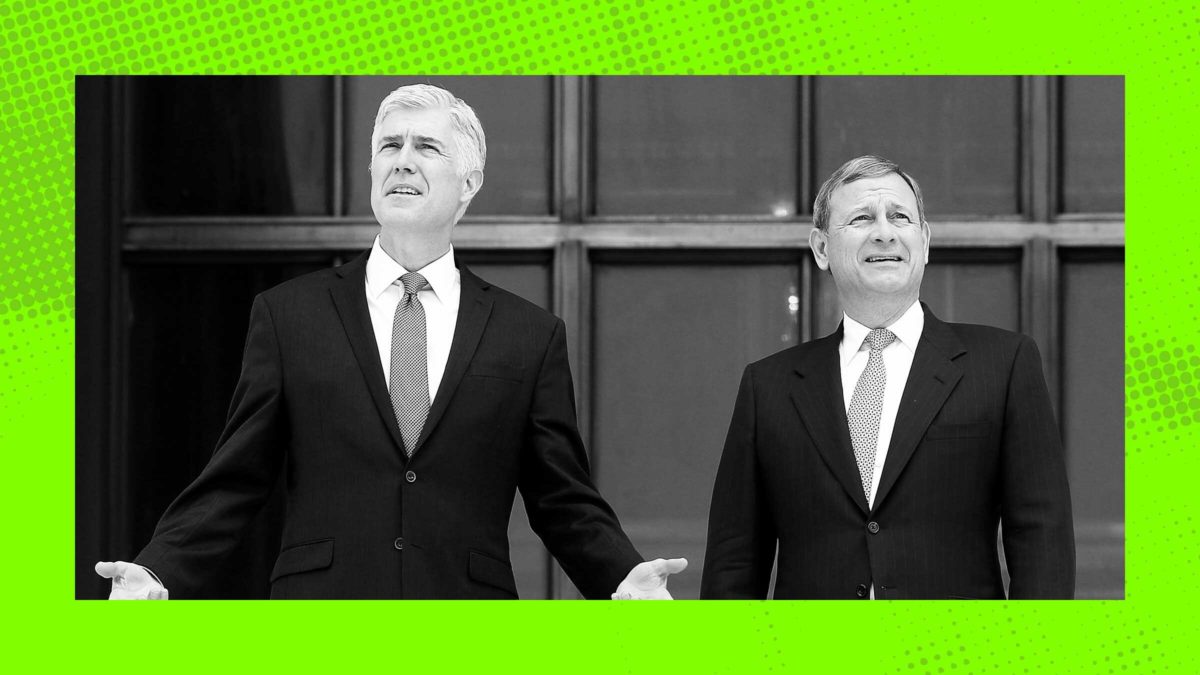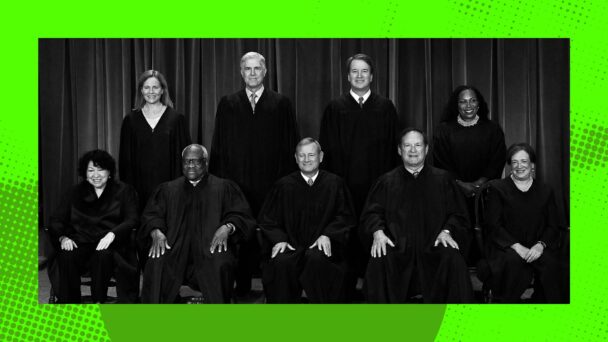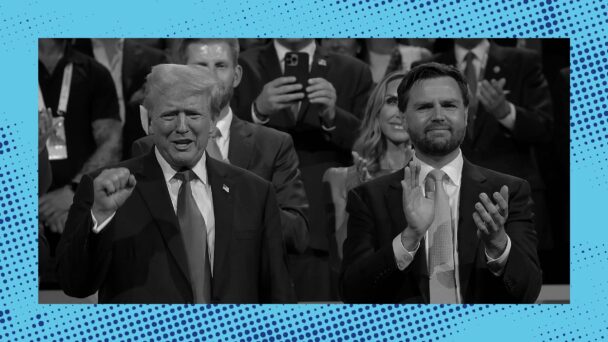The Supreme Court heard oral argument today in Louisiana v. Callais and Robinson v. Callais, two consolidated cases that aim to kill off the remnants of the Voting Rights Act—and, with it, the ability of people of color to protect themselves against racial gerrymanders designed by Republican lawmakers to entrench white political power.
The Voting Rights Act is a 1965 federal law that implements the constitutional guarantee of a right to vote that is not “denied or abridged” on account of race. Over the past 60 years, Voting Rights Act enforcement has transformed the makeup of both the American electorate and officeholders: Every Black person elected to represent Louisiana in Congress, for example, has been elected from a district created to comply with the Voting Rights Act. Between 1962 and 1980, per capita infrastructure spending in Black communities in the South doubled, and the number of Black people holding local elected office quadrupled, from 1,470 to 6,440.
Because the Voting Rights Act has done more than perhaps any other statute to build a multiracial democracy, the Supreme Court’s conservative justices have spent decades casting the law as constitutionally unsound. A recent report from Fair Fight Action and Black Voters Matter estimates that a decision in Callais that strips away the Voting Rights Act’s remaining protections could help create between 19 and 27 additional safe Republican seats in the House of Representatives—and cause up to 30 percent of the Congressional Black Caucus and 11 percent of the Congressional Hispanic Caucus to lose theirs.
On Wednesday, the Republican justices sounded eager to do just that, pondering the strengths and weaknesses of different methods of writing a majority opinion that would deny Black voters’ right to equal representation. The upshot of Callais is already clear; the only outstanding question is which bits of legal jargon they cobble together to justify it.
The Callais litigation arose out of the post-2020 Census redistricting cycle. In 2022, Louisiana Republican lawmakers enacted a congressional map that diluted Black residents’ voting power, “packing” many of them into one majority-Black district and “cracking” them among the rest. Black voters successfully challenged the map under the Voting Rights Act, so in 2024, Louisiana drew a new map that ensured Black people had an equal opportunity to elect the candidate of their choice.
Then, aggrieved white people sued over the new map, arguing that the legislature’s attempt to fix an unconstitutional racial gerrymander was also an unconstitutional racial gerrymander. The specific issue before the Court in Callais is whether the state’s intentional creation of that second majority-Black district—which is to say, replacing a racist map with a not-racist map—violates the Constitution’s prohibitions on racial discrimination.
Justice Samuel Alito’s preferred vehicle for blocking remedies for (illegal) racial gerrymandering was conflating it with (legal) partisan gerrymandering. “Isn’t seeking partisan advantage also an objective that a legislature may legitimately seek?” he asked. “If it happens to be that people of one race or another race overwhelmingly prefer one of the political parties, does that transform the situation into racial voting, or is it still just partisan voting?”
This is a typical Alito argument: Just last year, he authored the Supreme Court’s opinion in Alexander v. South Carolina NAACP, which held that states don’t run afoul of the Constitution’s prohibition on racial discrimination so long as they rebrand racist motivations as purely partisan ones. “We should not be quick to hurl such accusations at the political branches,” he wrote in Alexander—at least, not when white legislators’ feelings could get hurt.
Justice Brett Kavanaugh similarly returned to one of his hobbyhorses: imaginary expiration dates for statutes addressing racism. “As you know, this Court’s cases in a variety of contexts have said that race-based remedies are permissible for a period of time,” he said. According to Kavanaugh, permissible periods of time could be “decades in some cases,” but “should not be indefinite and should have an end point.” Kavanaugh’s many-people-are-saying-this argument glosses over the fact that none of those people are in Congress: He is seizing the authority of the legislative branch and replacing what lawmakers actually said in the Voting Rights Act with something he likes more, because it protects voters of color less.
Eventually, Justice Neil Gorsuch cut to the chase, and asked if it is “okay for a federal court to use a map on the remedial side that intentionally discriminates on the basis of race.” This is the classic argument of the conservative legal movement: Any awareness or use of race, even (or perhaps especially) if used to remedy racial discrimination, is inherently also racial discrimination. This is, as a matter of law and logic, horseshit. But it’s a useful fiction for sapping the Constitution of the power explicitly given to it by the post-Civil War framers to treat people of color as equal members of the body politic.
The Court’s Democratic appointees repeatedly tried to center this reality. “My colleagues are trying to tease it out in this intellectual way that doesn’t deal with the fact that race is used to help people,” said Justice Sonia Sotomayor. Justice Ketanji Brown Jackson underscored that “the state has an obligation” under both the Constitution and the Voting Rights Act to “provide an equally open electoral process.” Justice Elena Kagan asked one of the advocates, NAACP Legal Defense Fund President Janai Nelson, what the “results on the ground” would be like without the Voting Rights Act. “Catastrophic,” Nelson answered.
In an ideal world, this would matter, but the law and the facts were never the point of the Callais oral argument. The Republican justices were evaluating different paths, but all of them lead to the same destination: forcing people of color out of the political process, and leaving a government by and for white people in their place.






